Top Rankings
Woodman Elementary School District ranks among the top 20% of public school district in Montana for:
Category
Attribute
Science Proficiency
Highest science proficiency (Top 20%)
Student Attention
Lowest student:teacher ratio (Top 1%)
For the 2025 school year, there is 1 public elementary school serving 29 students in Woodman Elementary School District. This district's average elementary testing ranking is 5/10, which is in the bottom 50% of public elementary schools in Montana.
Public Elementary School in Woodman Elementary School District have an average math proficiency score of 30% (versus the Montana public elementary school average of 37%), and reading proficiency score of 50% (versus the 46% statewide average).
Minority enrollment is 10% of the student body (majority Black), which is less than the Montana public elementary school average of 24% (majority American Indian).
Overview
This School District
This State (MT)
# Schools
2 Schools
519 Schools
# Students
35 Students
96,346 Students
# Teachers
5 Teachers
6,988 Teachers
Student : Teacher Ratio
7:1
7:1
District Rank
Woodman Elementary School District, which is ranked within the top 50% of all 347 school districts in Montana (based off of combined math and reading proficiency testing data) for the 2021-2022 school year.
Overall District Rank
#165 out of 350 school districts
(Top 50%)
(Top 50%)
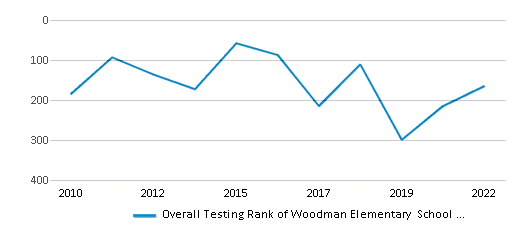
Math Test Scores (% Proficient)
21-39%
35%

Reading/Language Arts Test Scores (% Proficient)
40-59%
46%
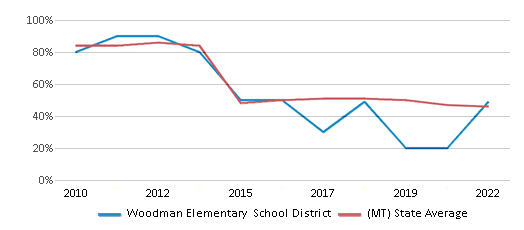
Science Test Scores (% Proficient)
<50%
37%
Students by Ethnicity:
Diversity Score
0.26
0.40
# American Indian Students
n/a
10,163 Students
% American Indian Students
n/a
11%
# Asian Students
n/a
554 Students
% Asian Students
n/a
1%
# Hispanic Students
2 Students
6,188 Students
% Hispanic Students
6%
6%
# Black Students
3 Students
680 Students
% Black Students
8%
1%
# White Students
30 Students
73,657 Students
% White Students
86%
76%
# Hawaiian Students
n/a
169 Students
% Hawaiian Students
n/a
n/a
# Two or more races Students
n/a
4,935 Students
% of Two or more races Students
n/a
5%
Students by Grade:
# Students in PK Grade:
-
1,029
# Students in K Grade:
11
11,750
# Students in 1st Grade:
4
10,993
# Students in 2nd Grade:
5
11,771
# Students in 3rd Grade:
1
11,487
# Students in 4th Grade:
4
11,459
# Students in 5th Grade:
2
11,360
# Students in 6th Grade:
2
11,339
# Students in 7th Grade:
4
7,650
# Students in 8th Grade:
2
7,460
# Students in 9th Grade:
-
19
# Students in 10th Grade:
-
12
# Students in 11th Grade:
-
10
# Students in 12th Grade:
-
7
# Ungraded Students:
-
-
District Revenue and Spending
Total Revenue
$696,000
$2,285 MM
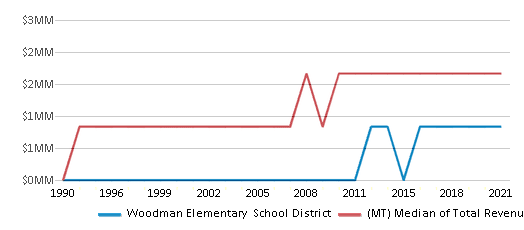
Spending
$736,000
$2,298 MM
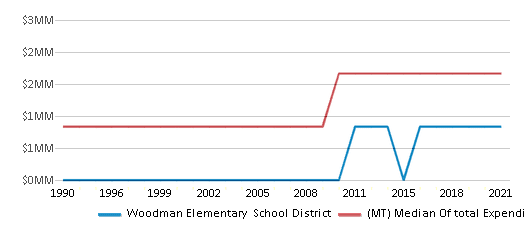
Revenue / Student (10-11)
$9,442
$15,398
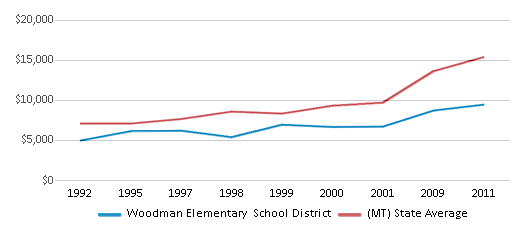
Spending / Student (10-11)
$9,808
$15,854
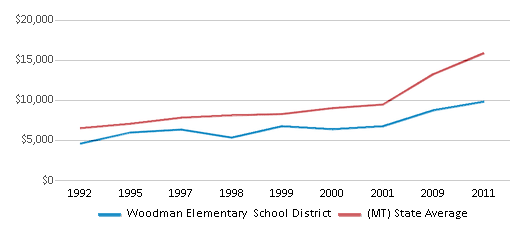
Best Woodman Elementary School District Public Elementary Schools (2025)
School
(Math and Reading Proficiency)
(Math and Reading Proficiency)
Location
Grades
Students
Rank: #11.
Woodman School
(Math: 21-39% | Reading: 40-59%)
Rank:
Rank:
5/
Bottom 50%10
18470 Highway 12 West
Lolo, MT 59847
(406) 273-6770
Lolo, MT 59847
(406) 273-6770
Grades: PK-6
| 29 students
Recent Articles

What Is A Charter School?
Explore the world of charter schools in this comprehensive guide. Learn about their history, how they operate, and the pros and cons of this educational innovation. Discover key facts about charter schools, including admission policies, demographics, and funding, as well as what to look for when considering a charter school for your child.

10 Reasons Why High School Sports Benefit Students
Discover the 10 compelling reasons why high school sports are beneficial for students. This comprehensive article explores how athletics enhance academic performance, foster personal growth, and develop crucial life skills. From improved fitness and time management to leadership development and community representation, learn why participating in high school sports can be a game-changer for students' overall success and well-being.

February 05, 2025
Understanding the U.S. Department of Education: Structure, Impact, and EvolutionWe explore how the Department of Education shapes American education, from its cabinet-level leadership to its impact on millions of students, written for general audiences seeking clarity on this vital institution.





